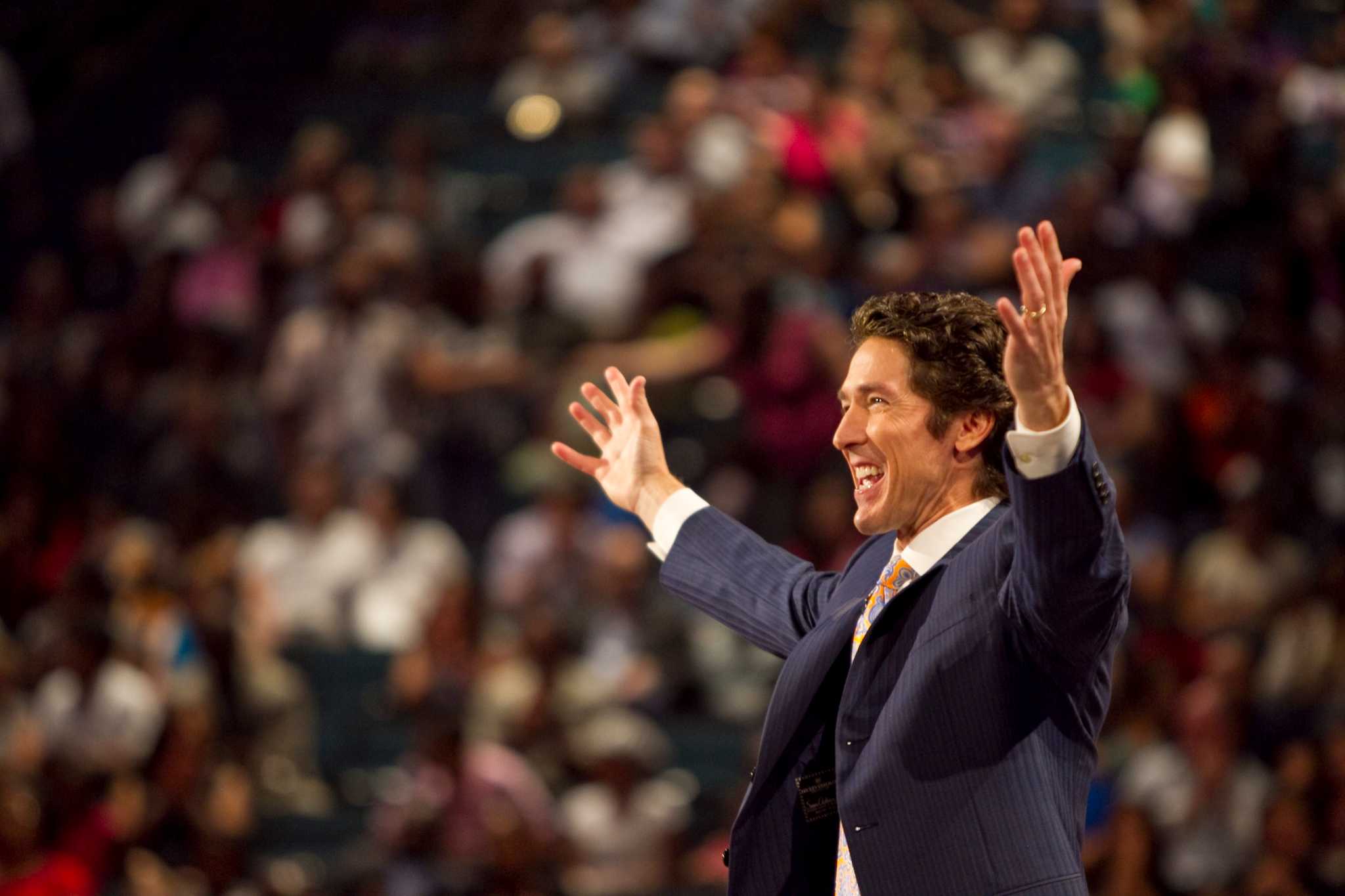Deconstructing Fame: Unveiling America’s Most Influential Pastors
The concept of a “famous pastor” has evolved significantly in America, moving beyond the confines of large congregations and televised sermons. While figures like Billy Graham dominated the 20th century with stadium revivals and a powerful media presence, today’s landscape sees fame intertwined with a different set of metrics. Best-selling books, massive social media followings, and even perceived wealth have become intertwined with the image of a pastor who holds sway over a significant portion of the American public.
But one thing remains constant: the reach of America’s most famous pastors extends far beyond Sunday service. These individuals influence political discourse, inspire (or become embroiled in) social movements, and even shape the business world through the ever-growing phenomenon of mega-churches.
From the social justice battles led by pastors like Gardner C. Taylor to the global ministries of figures like Rick Warren, America’s most famous pastors leave an imprint far beyond their congregations. They spark debates about theology, become lightning rods for cultural anxieties, and, inevitably, face scrutiny as their fame grows.
Defining “Fame” in the Context of Ministry
How do we measure the “fame” of a pastor in the modern era? It’s a question with no easy answers, as the metrics that once defined influence have been disrupted by the digital age.
- Traditional Metrics: Historically, a pastor’s fame was measured by the size of their congregation, their impact on theological thought (often through writing), and their historical significance (such as Billy Graham’s close relationships with presidents).
- Modern Metrics: The rise of televangelism, online sermons, and social media have introduced new metrics. Pastors are now ranked by their book sales, the number of followers they have online, and even their perceived wealth, which is often tied (controversially) to the prosperity gospel movement.
It’s crucial to emphasize the seismic shift towards digital platforms as key drivers of fame for contemporary pastors. The ability to reach millions, if not billions, through a smartphone has fundamentally altered the dynamics of religious leadership.
The Usual Suspects: Perennially Famous Names
Certain names consistently appear in discussions about America’s most famous pastors. These individuals have achieved a level of recognition that transcends denominational boundaries and often permeates mainstream culture.
- Billy Graham: Widely regarded as the most influential evangelist of the 20th century, Graham’s stadium crusades, televised sermons, and close relationships with several U.S. presidents cemented his status as a towering figure in American Christianity.
- Rick Warren: Author of the best-selling book The Purpose Driven Life, Warren’s leadership of Saddleback Church (one of the largest churches in the United States) and his focus on church growth strategies have made him a model for modern mega-church pastors.
- Joel Osteen: Known for his optimistic messages and focus on the prosperity gospel, Osteen leads Lakewood Church, the largest congregation in the country. His televised sermons and numerous books have made him a household name, though he has also attracted criticism for his theological views.
It’s essential to provide concise profiles of these figures, highlighting their notable achievements, any controversies they may have been involved in, and how their influence extends beyond the pulpit.
Rising Stars: Pastors Gaining Influence Now
While the aforementioned pastors remain influential, a new generation is emerging, leveraging the power of digital media to connect with audiences in unprecedented ways.
- Crosswalk’s “Most Influential” List: Organizations like Crosswalk regularly publish lists of the most influential pastors. Recent lists have included figures like Alistair Begg, Tony Evans, and the late Timothy Keller, whose teachings continue to have a profound impact.
- Analyzing Common Factors: Interestingly, these contemporary influencers often share common traits: a strong online presence, a focus on addressing specific social issues relevant to younger generations, and a preaching style that feels relatable and accessible.
The Impact of Fame: A Double-Edged Sword
The fame attained by these pastors undeniably creates opportunities for positive change but also presents unique challenges and potential pitfalls.
- Positive: Fame can amplify social justice work (as seen in the legacy of Gardner C. Taylor), facilitate global outreach, and encourage greater engagement with matters of faith.
- Negative: However, fame also invites intense scrutiny of pastors’ finances (particularly those associated with the prosperity gospel), increases the risk of developing a cult of personality around the pastor, and can lead to the oversimplification of complex theological issues.
The Future of Pastoral Fame: Embracing Digital Discipleship
Predicting the future of any social phenomenon is a complex task, but several trends suggest how pastoral fame might evolve.
- Continued Growth of Online Ministries: The rise of podcasts, virtual communities, and online-only churches signifies that the lines between physical and digital religious communities will continue to blur. Pastors who master these platforms will likely be those who gain the most significant followings.
- Increased Specialization: We may see a rise in pastors who become known for their expertise on specific issues, such as family, mental health, or social justice. This specialization could attract niche audiences seeking guidance in particular areas of life.
- Potential for Greater Diversity: The demographics of American Christianity are shifting, and it’s likely that we’ll see greater diversity reflected in pastoral leadership. This includes the growing prominence of female pastors and leaders from minority communities whose voices have historically been marginalized.
The concept of a “famous pastor” is fluid and constantly evolving alongside cultural shifts and technological advancements. One thing is certain: these leaders hold a powerful platform and have the ability to impact millions of lives. How they choose to wield that influence will shape the future of faith in America.
Unveiling “The Big Pastor”: Exploring Global Faith Leaders & Their Impact
Deconstructing “Big”: Rethinking Influence in the Digital Age
The question “Who is the big pastor in the world?” begs us to redefine what “big” truly means in the context of religious leadership today. While mega-churches and sprawling congregations once signaled influence, the concept has expanded to encompass a global reach amplified by technology, a significant impact on theological discourse, and a legacy that sparks lasting societal change.
Gone are the days when a pastor’s influence was confined by geographical boundaries. From Billy Graham’s pioneering use of televised crusades to online ministries like John Piper’s Desiring God, “big pastors” now transcend borders, utilizing media to shape the faith of millions across generations and continents.
Their influence extends beyond the pulpit, delving into the realms of social justice, publishing, and humanitarian aid. Today’s most influential pastors understand that their message resonates beyond Sunday sermons, prompting them to engage in initiatives that address the pressing needs of a global community.
Factors of Influence: Beyond the Megachurch
To understand the multifaceted nature of influence in the 21st century, we need to look beyond the traditional metrics of congregation size and delve into the factors that contribute to a pastor’s global impact.
- Global Reach: Gone are the days when influence was limited by geography. Tools like Google Trends allow us to analyze search volume for pastors across different countries and languages, revealing their international appeal.
- Theological Impact: “Big pastors” often spark significant theological discussions, influencing denominations, generating debate within academic circles, and shaping how people understand their faith.
- Media Presence: From YouTube sermons to podcast downloads, book sales figures to television viewership, a pastor’s media presence provides concrete data about their reach.
- Social Impact: True influence extends beyond words. Assessing a pastor’s involvement in social justice movements, the charitable organizations they found, and their influence on policy debates reveals the tangible impact of their ministry.
Historical Perspective: From Pulpit to Global Stage
To understand the present, we must look to the past. Analyzing the legacies of those who came before us highlights how the concept of a “big pastor” has evolved over time.
- The Legacy Builders:
- Billy Graham: His pioneering use of media, from radio broadcasts to televised crusades, redefined evangelism and established a blueprint for reaching a global audience. His counsel to presidents solidified his influence beyond the pulpit.
- Gardner C. Taylor: Renowned for his eloquence and profound theological insights, Taylor’s impact reached far beyond his Brooklyn congregation. His influence on the African-American pulpit and his tireless work in the civil rights movement cemented his legacy as both a spiritual leader and a social activist.
- Evolution of Influence: The trajectories of figures like Graham and Taylor demonstrate how the definition of a “big pastor” evolved with the rise of radio, television, and, eventually, the internet. Each technological advancement provided new avenues for amplifying a pastor’s message and expanding their sphere of influence.
Contemporary Influencers: Navigating a Digital World
Today’s most influential pastors navigate a world saturated with information, where digital platforms have become essential tools for disseminating their message and fostering a sense of community.
- The “Most Influential” Today: Various publications offer lists of influential pastors, each with its own criteria.
- Crosswalk’s Top 12: This list often features pastors like Alistair Begg, Tony Evans, Joel C. Gregory, and the late Timothy Keller. Analyzing their diverse approaches to preaching, church growth, and social engagement provides insight into what resonates with contemporary audiences.
- Christianity Today’s Focus: This publication often highlights figures like Tim Keller, John Piper, and Andy Stanley, known for their intellectual depth and engagement with cultural issues. Their prominence underscores the evolving expectations of what constitutes a “big pastor” in an increasingly secularized world.
- The Rise of Online Ministries: John Piper’s Desiring God, with its extensive library of sermons, articles, and resources, exemplifies the shift towards digital discipleship. This model allows pastors to reach a global audience without the constraints of a physical church building.
The Televangelist Phenomenon: Faith on the Airwaves
The rise of televangelism brought about a new breed of “big pastor,” one whose face became recognizable in living rooms around the world.
- Kenneth Copeland: Identified by Legit.ng as the “most famous pastor,” Copeland’s ministry exemplifies the power of televangelism in reaching a global audience. His teachings, while sometimes controversial, have resonated with millions.
- The Intersection of Faith & Finance: Televangelism, however, has not been without its controversies. The often lavish lifestyles of some televangelists and their emphasis on the prosperity gospel have sparked significant debate about the relationship between faith and wealth.
Unique Insights & Untapped Potential
To truly understand the evolving landscape of pastoral influence, we must continue to ask critical questions, explore emerging trends, and move beyond traditional definitions.
- Geographical Diversity: While this analysis has primarily focused on American pastors, it’s crucial to acknowledge the influential figures outside the United States who hold significant sway within their own cultures and beyond.
- The Rise of Female Leaders: Despite the historical dominance of male figures in church leadership, a growing number of female pastors are breaking barriers and gaining influence within their denominations and beyond. Their stories deserve greater attention and recognition.
- The Future of “Big Pastors”: As technology continues to evolve, the definition of a “big pastor” will likely continue to shift. Will online-only churches become the norm? How will social media shape the next generation of faith leaders?
By continuing to analyze these trends, we gain a deeper understanding of how faith is lived, shared, and influenced in the 21st century. The concept of a “big pastor” is no longer defined solely by the size of their congregation but by the breadth of their reach, the depth of their impact, and their ability to navigate a world where digital platforms have become the new public square for religious discourse.
Unveiling California’s Famous Baptist Preacher: Beyond the Mega-Church Walls
California’s Baptist Tapestry: More Than Meets the Eye
California, a state often associated with Hollywood and Silicon Valley, might not immediately conjure images of fiery Baptist preachers. Yet, the Golden State boasts a rich and complex history within the Baptist tradition, with figures who have shaped not only religious life but also community engagement and social activism.
While Rick Warren, founder of the mega-church Saddleback and author of the best-selling The Purpose Driven Life, is undoubtedly a household name, California’s Baptist landscape extends far beyond his significant influence. This exploration delves into the lesser-known figures who have left an indelible mark on California’s religious tapestry.
From established mega-churches to smaller, community-focused congregations, from pulpits known for their theological depth to those engaging in cutting-edge social justice work, California’s Baptist preachers represent a diverse and evolving landscape. This article aims to shed light on these often-overlooked figures and their impact on the Golden State.
Beyond Rick Warren: Discovering California’s Other Famous Baptist Preachers
While Rick Warren’s influence is undeniable, several other Baptist preachers have made significant contributions to California’s religious landscape. These individuals, each with their unique style and theological emphasis, have attracted large followings and contributed significantly to their communities and beyond.
To identify these individuals, we can:
- Research Competitors’ Lists: Analyzing existing lists of influential pastors, specifically those focused on recent decades, can reveal potential candidates. Focusing on those with a strong California connection and Baptist affiliation will help narrow the search.
- Consider Regional Impact: Examining prominent Baptist churches in major California cities, such as Los Angeles, San Francisco, and San Diego, can uncover influential figures. Factors like congregation size, community involvement, and media presence are good indicators of a pastor’s reach.
- Factor in Unique Contributions: It’s important to acknowledge that influence takes many forms. Pastors leading specialized ministries, engaging in impactful social justice work, or making significant contributions to Baptist theological scholarship, even within smaller congregations, deserve recognition.
By exploring these avenues, we can move beyond the well-trodden path of mega-church pastors and uncover the hidden gems within California’s Baptist community.
Rick Warren: A Force to Be Reckoned With
It’s impossible to discuss famous Baptist preachers in California without acknowledging the impact of Rick Warren.
- Background: Born in San Jose, California, in 1954, Warren founded Saddleback Church in Lake Forest, California, in 1980. His 2002 book, The Purpose Driven Life, became an international phenomenon, selling over 30 million copies worldwide.
- Significance: Warren is widely considered one of the most influential Evangelical Christian leaders in the United States. Saddleback Church, with its multi-campus model and extensive community outreach programs, has served as a blueprint for mega-churches across the nation. The Purpose Driven Life, with its accessible approach to finding meaning and purpose, resonated with millions seeking spiritual guidance.
- Key Arguments: Warren’s success can be attributed to his ability to communicate complex theological concepts in a relatable and practical manner. His focus on purpose, combined with Saddleback’s emphasis on small groups and creating a sense of community, has attracted a diverse congregation and inspired countless churches to adopt similar models.
Unique Insights & Untapped Potential: Beyond the Familiar Narrative
To create an article that stands out, it’s essential to delve deeper, unearthing insights that go beyond a surface-level examination of California’s Baptist preachers.
- Exploring the Evolution of Baptist Preaching in California: How has the style, message, and social engagement of Baptist preachers in California evolved over time? Has the state’s diverse cultural landscape influenced how these preachers approach their ministries?
- Examining the Intersection of Faith and Social Issues: California has always been at the forefront of social change. How have Baptist preachers in the state addressed pressing issues such as homelessness, immigration, or environmental concerns? Have they used their platforms to advocate for change and engage in social justice work?
- Showcasing the Diversity Within California’s Baptist Community: The image of a Baptist preacher often conjures a specific stereotype. However, California’s Baptist community is diverse, encompassing female pastors, pastors of color, and those leading congregations with unique focuses. Highlighting this diversity challenges preconceived notions and provides a more nuanced perspective.
Tips for Creating a Superior Article
To create an article that outranks competitors and engages readers, consider these additional tips:
- Weave in Statistics and Data: Concrete numbers add credibility to your claims. For example, mention the number of Baptists in California, the growth of specific churches, or the impact of particular ministries.
- Incorporate Quotes and Anecdotes: Direct quotes from the preachers, testimonials from those impacted by their ministries, or anecdotes that illustrate their character and impact bring the article to life.
- Use Engaging Visuals: Images, infographics, and even video clips can enhance your article and make it more shareable on social media.
By following this comprehensive approach, you can create an insightful, engaging, and SEO-optimized article that establishes you as a knowledgeable voice on the subject of famous Baptist preachers in California. Remember, it’s not just about listing names, but about providing context, analysis, and nuanced perspectives that shed light on the profound impact of these individuals on their communities and beyond.









